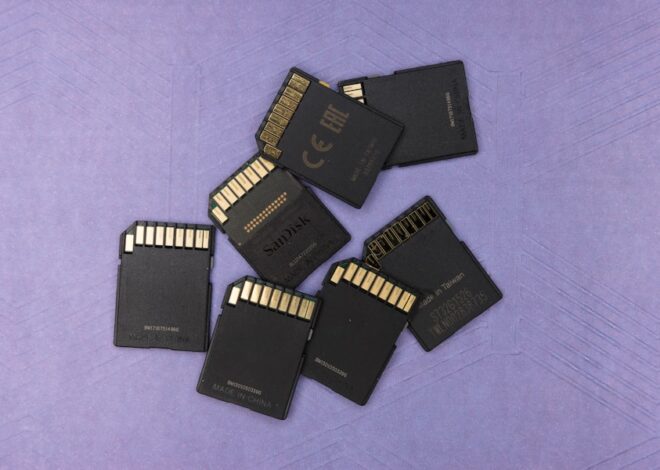
How to Choose the Best External Drive for Backing Up Your Data
When it comes to choosing an external drive, the first step is to understand your storage needs. Consider how much data you need to store and how often you will be accessing it. If you are a photographer or videographer, for example, you may need a large amount of storage for high-resolution images and videos. On the other hand, if you are simply looking to back up your documents and files, a smaller drive may suffice. It’s also important to consider whether you need a drive for personal or professional use, as this can impact the type and size of drive you choose.
In addition to the amount of storage you need, it’s also important to consider the type of data you will be storing. If you work with large files or need to access data quickly, you may want to consider a solid-state drive (SSD) for faster transfer speeds. On the other hand, if you are simply looking for a cost-effective solution for backing up files, a traditional hard disk drive (HDD) may be sufficient. Understanding your storage needs is crucial in choosing the right external drive for your specific requirements.
Considering the Different Types of External Drives
Once you have a clear understanding of your storage needs, it’s time to consider the different types of external drives available. There are several options to choose from, including traditional hard disk drives (HDDs), solid-state drives (SSDs), and hybrid drives. HDDs are the most common type of external drive and are known for their large storage capacities and affordable prices. However, they are also slower and less durable than SSDs.
SSDs, on the other hand, are known for their fast transfer speeds and durability. They are ideal for those who need to access data quickly and frequently, such as photographers and videographers. Hybrid drives combine the best of both worlds, offering the large storage capacities of HDDs with the fast transfer speeds of SSDs. When considering the different types of external drives, it’s important to weigh the pros and cons of each type based on your specific storage needs and budget.
Evaluating Transfer Speeds and Connectivity Options
Transfer speeds and connectivity options are crucial factors to consider when choosing an external drive. The transfer speed of a drive determines how quickly data can be read from or written to the drive. This is especially important for those who work with large files or need to access data quickly. Solid-state drives (SSDs) typically offer faster transfer speeds than traditional hard disk drives (HDDs), making them ideal for those who need quick access to their data.
In addition to transfer speeds, it’s important to consider the connectivity options available with an external drive. Most drives offer USB connectivity, but there are different versions of USB to consider. USB 3.0 offers faster transfer speeds than USB 2.0, so it’s worth considering if speed is a priority for you. Some drives also offer Thunderbolt or eSATA connectivity options for even faster transfer speeds. When evaluating transfer speeds and connectivity options, it’s important to consider how you will be using the drive and what type of devices you will be connecting it to.
Factoring in Size and Portability
The size and portability of an external drive are important factors to consider, especially for those who need to take their data on the go. If you travel frequently or need to access your data from multiple locations, a smaller and more portable drive may be ideal. Solid-state drives (SSDs) are typically smaller and lighter than traditional hard disk drives (HDDs), making them easier to transport.
In addition to size, it’s also important to consider the durability of an external drive, especially if you will be taking it on the go. Some drives are designed to be rugged and resistant to shock, vibration, and dust, making them ideal for travel and outdoor use. When factoring in size and portability, it’s important to consider how and where you will be using the drive, as well as any specific durability requirements you may have.
Examining Durability and Reliability
Durability and reliability are crucial factors to consider when choosing an external drive, especially if you will be using it for professional purposes or taking it on the go. Solid-state drives (SSDs) are known for their durability and resistance to shock, vibration, and dust, making them ideal for travel and outdoor use. Traditional hard disk drives (HDDs) are more susceptible to damage from drops and bumps, so it’s important to handle them with care.
In addition to durability, it’s also important to consider the reliability of an external drive. Look for drives from reputable manufacturers with a track record of reliability and quality. Reading user reviews and seeking recommendations from colleagues or friends can also help you gauge the reliability of a particular drive. When examining durability and reliability, it’s important to consider how and where you will be using the drive, as well as any specific durability requirements you may have.
Comparing Prices and Warranty Options
When choosing an external drive, it’s important to compare prices and warranty options to ensure you get the best value for your money. Solid-state drives (SSDs) are typically more expensive than traditional hard disk drives (HDDs), but they also offer faster transfer speeds and greater durability. Hybrid drives offer a middle ground in terms of price and performance, making them a good option for those on a budget.
In addition to price, it’s important to consider the warranty options available with an external drive. Look for drives with longer warranties and good customer support in case you encounter any issues with the drive. Some manufacturers also offer data recovery services in case of drive failure, which can provide added peace of mind. When comparing prices and warranty options, it’s important to weigh the cost against the performance and reliability of the drive.
Reading Reviews and Seeking Recommendations
Finally, reading reviews and seeking recommendations can help you make an informed decision when choosing an external drive. Look for reviews from reputable sources that provide detailed information about the performance, reliability, and durability of different drives. User reviews can also provide valuable insights into the real-world performance of a particular drive.
In addition to reading reviews, seeking recommendations from colleagues or friends who have experience with external drives can help you narrow down your options. They can provide firsthand insights into the performance and reliability of different drives based on their own experiences. When reading reviews and seeking recommendations, it’s important to consider how the drive will be used and what specific requirements you have in terms of storage capacity, transfer speeds, durability, and reliability.
In conclusion, choosing the right external drive requires careful consideration of your storage needs, the different types of drives available, transfer speeds and connectivity options, size and portability, durability and reliability, prices and warranty options, as well as reading reviews and seeking recommendations. By taking these factors into account, you can make an informed decision that meets your specific requirements and budget. Whether you need a large-capacity drive for professional use or a smaller drive for personal use on the go, there are plenty of options available to suit your needs.


